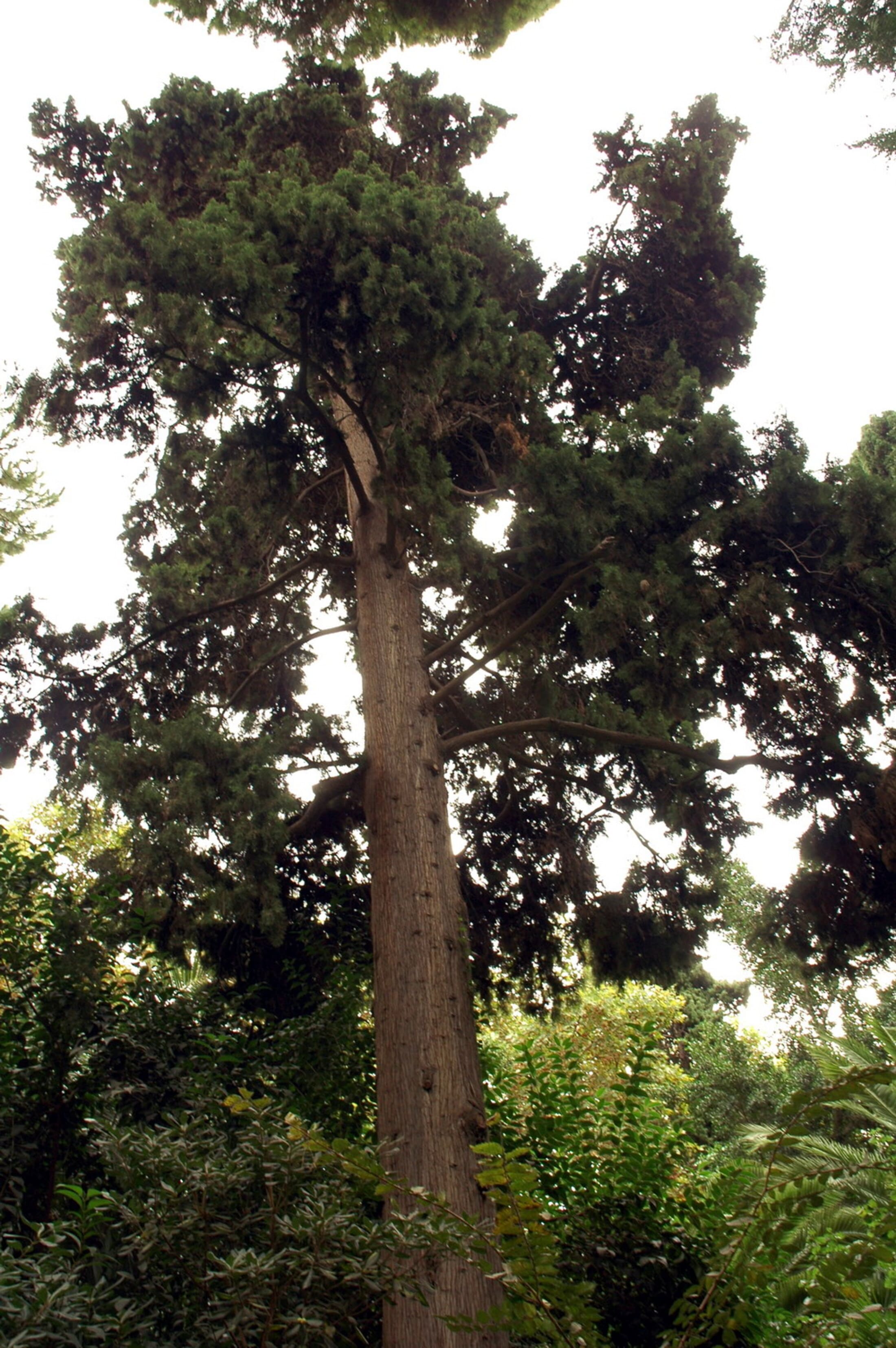The cypress
This conifer's shape and longevity have made it a common funerary symbol in cemeteries. Its wood, which is aromatic, highly resistant, and practically imperishable and immune to attack from insects or fungi, has traditionally been used in shipbuilding, carpentry, cabinetmaking and string instrument manufacture. Indeed, the Phoenicians built their navy from cypress wood, and much of the Turkish fleet is believed to have been crafted from the same material, which can also be found in Egyptian and Phoenician sarcophagi. According to legend, cypress wood, along with cedar, was used to build Solomon's Temple. Its leaves are the source of the cypress oil and essence used in pharmaceuticals and cosmetics, and are also used to flavour a variety of products. The cypress is a popular tree in landscape gardening, being planted both in isolation or, due to its tolerance of pruning, as part of a hedge.
Next to the umbrella pine at one end of the Nymph's water jump stands an ancient cypress. The species is known for its longevity, sometimes living for over five hundred years, with certain specimens even reported to have exceeded a thousand. Its botanical name is Cupressus sempervirens, and it belongs to the Cupressaceae family.
Interesting fact: the doors of St. Peter's Cathedral, built during the time of Constantine the Great, Roman Emperor between 306 and 337 A.D., are made from cypress wood.

